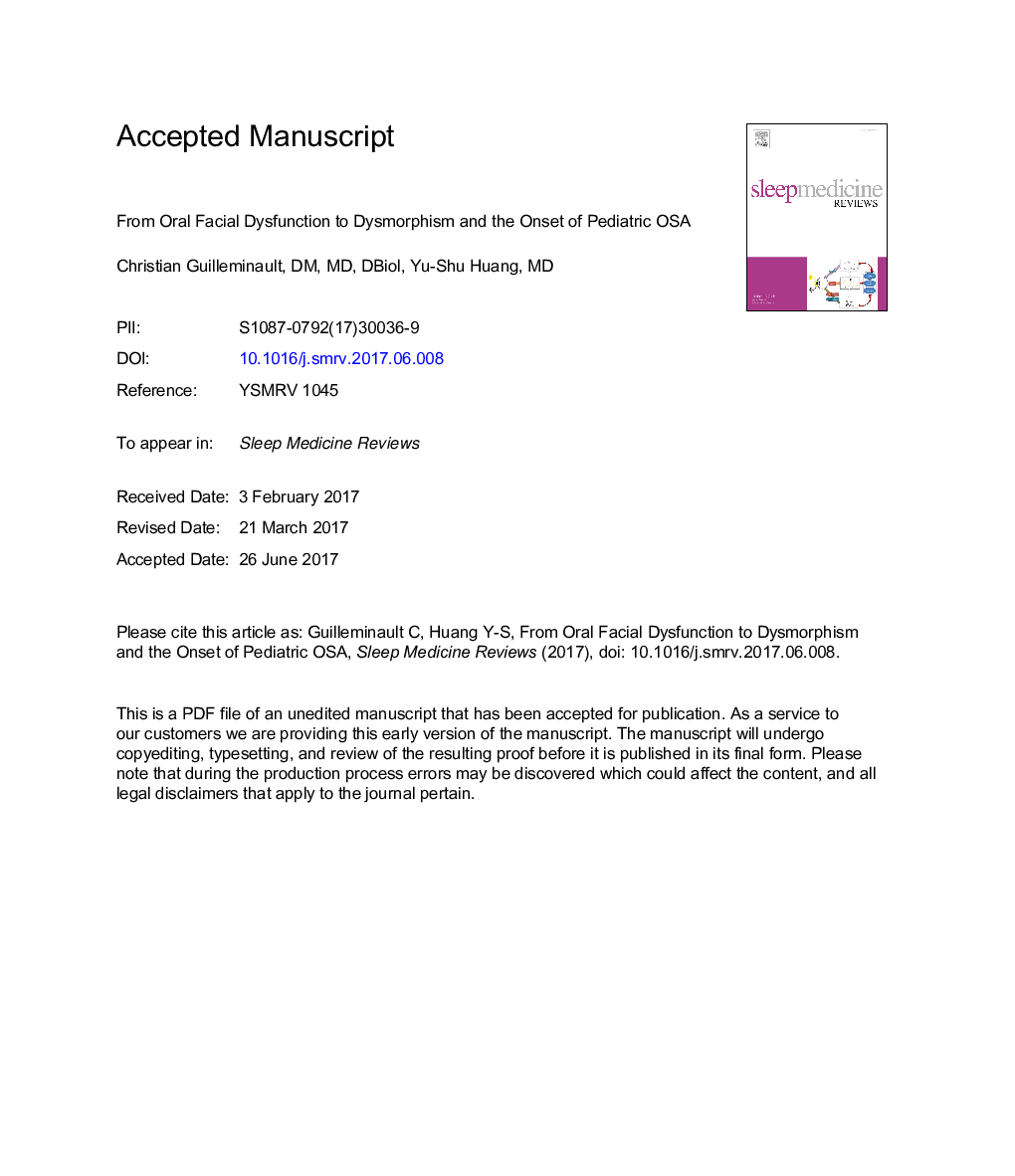| Article ID | Journal | Published Year | Pages | File Type |
|---|---|---|---|---|
| 8691026 | Sleep Medicine Reviews | 2018 | 27 Pages |
Abstract
The upper airway is a collapsible tube, and its collapsibility increases during sleep. Extrinsic factors such as atypical craniofacial features may increase the risks of airway collapse. We review early development of oral-facial structures and the anatomical variants that may be present at birth and can impact nasal breathing. After birth, there is a continuous interaction between orofacial functions and growth of anatomic features. We review the dysfunctions identified to date that may impact orofacial development leading to sleep-disordered-breathing through changes in the orofacial growth. The identification of risk-factors, ultimately leading to full-blown obstructive sleep apnea, may allow early recognition of these factors and the development of treatments to eliminate early problems or at least decrease their impact.
Related Topics
Life Sciences
Neuroscience
Neurology
Authors
Christian Guilleminault, Yu-Shu Huang,
